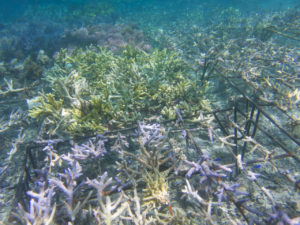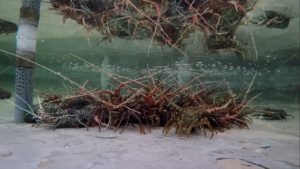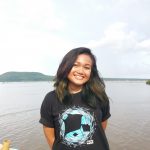Today we had a chance to learn about different nature conservation approaches, by visiting two initiatives that use a market-based conservation approach for sustainability.
First we visited a coral sanctuary at Hatamin Island, Labuan Bajo. This sanctuary was developed by Coral Guardian to rehabilitate areas of degraded coral reef and to establish a visitor attraction and information center. The coral reef is the foundation of the tropical coastal ecosystem, providing shelter and food for marine organisms, but in some places these coral habitats have been disturbed by illegal fishing gears such as bombs and cyanide. Unless alternative ways of using coral reefs can be found that are more sustainable, fishermen may continue using these destructive methods. Coral Guardian promotes innovative approaches for marine conservation that encourage sustainable development. The project at Hatamin Island has employed several people from the nearby fishing village to manage the reef rehabilitation efforts, and more than 130 tables of coral have been replanted with seven species of coral. The underwater area was so bright and colourful!
During this field trip we were taught a technique for replanting coral. Using an iron frame and cable ties, we fixed coral fragments to enable them to grow in optimum conditions. We had a chance to discuss with the workers at Hatamin Island, and I think the concept of engaging local workers is giving a good impact. Through this project local people have become more aware about the coral ecosystem in Labuan Bajo, and with tourists coming to visit the sanctuary and learn about coral reefs, they will also receive an income for protecting the ecosystem.
Next we visited a fish farm at a place called Loh Mbongi. This fish farm was established more than 15 years ago as a social enterprise to reduce wild capture of reef fish and to provide jobs for local people. They were farming tiger groupers and lobster. I think this could be a good tool to reduce pressure on fishery resources, but it takes a long time for grouper to grow to market size. Perhaps more local people could be engaged in this operation, by growing out grouper in sea cages and providing an alternative livelihood for fishermen.
Today we learned several techniques for conservation management in different sector. For me it was interesting to see how the private sector can play just as important a role as government and NGOs in protecting our oceans. This valuable experience inspired us to think about how we can develop an initiative that is sustainable both economically and ecologically.




